If washing machines suddenly disappeared from the life of modern housewives, it would be akin to the onset of the apocalypse. And yet 50 years ago, only every third Soviet family could boast of having a “washing machine”.
Today, this household appliance has become simply irreplaceable. A good washing machine provides high quality washing and spinning, does not make too much noise, and also saves water and energy. For everyone who is going to buy a new au pair, we offer Top 10 tips on how to choose a washing machine.
Or read our rating of washing machines 2016... The best washing machines in terms of price-quality ratio.
10. Boot type
 Top-loading machines require a minimum of space, but they cannot be built into a kitchen set, so you can place such a machine in the bathroom or in a separate laundry room. In addition, there is no need to bend over and strain your back when loading laundry into the vertical machine. Another plus of these machines is the ability to add laundry during the program. But frontal models are considered more reliable.
Top-loading machines require a minimum of space, but they cannot be built into a kitchen set, so you can place such a machine in the bathroom or in a separate laundry room. In addition, there is no need to bend over and strain your back when loading laundry into the vertical machine. Another plus of these machines is the ability to add laundry during the program. But frontal models are considered more reliable.
9. Dimensions
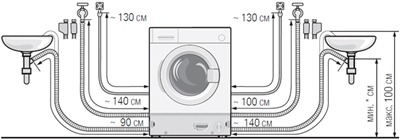 The standard dimensions of the washing machine are 80-85cm height, 50-65cm depth, 40-60cm width. However, there are low models that, for example, can be installed under the sink. You can also choose a narrow model, 33 - 45 cm deep.
The standard dimensions of the washing machine are 80-85cm height, 50-65cm depth, 40-60cm width. However, there are low models that, for example, can be installed under the sink. You can also choose a narrow model, 33 - 45 cm deep.
8. Decide on the installation
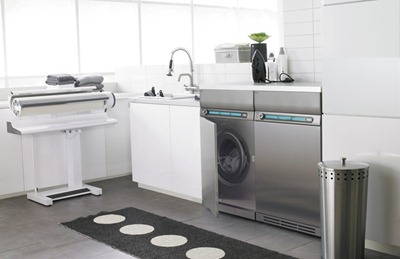 The built-in washing machine has a recess for a kitchen ramp, an option for securing a door and a removable top cover. Typically, embedded models are more expensive. If you really need to install the machine under a tabletop, you can select a free-standing model and remove the top cover from it. However, with this option, you need to make sure that the powder loading tray extends far enough to peek out from under the edge of the countertop.
The built-in washing machine has a recess for a kitchen ramp, an option for securing a door and a removable top cover. Typically, embedded models are more expensive. If you really need to install the machine under a tabletop, you can select a free-standing model and remove the top cover from it. However, with this option, you need to make sure that the powder loading tray extends far enough to peek out from under the edge of the countertop.
7. Maximum loading
 Modern household machines are able to wash from 3 to 10 kg of laundry. As a rule, a family of 3-4 people needs a car with a load of up to 6 kg. Well, for two, a compact machine for 3-4 kg will be enough.
Modern household machines are able to wash from 3 to 10 kg of laundry. As a rule, a family of 3-4 people needs a car with a load of up to 6 kg. Well, for two, a compact machine for 3-4 kg will be enough.
6. Energy class
 The most economical washing machines are rated A +. Such models spend 0.7-0.9 kW / hour for washing when washing at a temperature of 60 degrees. Class A machines consume about 1 kWh of energy.
The most economical washing machines are rated A +. Such models spend 0.7-0.9 kW / hour for washing when washing at a temperature of 60 degrees. Class A machines consume about 1 kWh of energy.
5. Class of washing and spinning
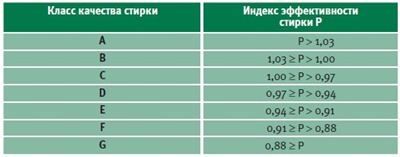 Most modern machines provide washing class A, less often there are models with washing class B, although it is almost impossible to visually distinguish things washed in different machines. Spin class A means that 40-45% moisture will remain in the laundry, for comparison, class C means 60% residual moisture.
Most modern machines provide washing class A, less often there are models with washing class B, although it is almost impossible to visually distinguish things washed in different machines. Spin class A means that 40-45% moisture will remain in the laundry, for comparison, class C means 60% residual moisture.
4. Spin speed
 The spin speed of the washing machine can vary from 800 to 2000 rpm. But the optimal indicator that covers the needs of the average housewife is 1000 revolutions. At higher speeds, it makes sense to wring out only terry products and thick bedspreads.
The spin speed of the washing machine can vary from 800 to 2000 rpm. But the optimal indicator that covers the needs of the average housewife is 1000 revolutions. At higher speeds, it makes sense to wring out only terry products and thick bedspreads.
3. Number of programs
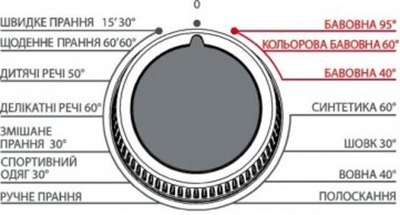 Less than a third of housewives use more than 3 different wash programs. As a rule, it is sufficient to have separate programs for cottons, synthetics and light fabrics with the possibility of changing the temperature and spin speed.For young mothers, a program for washing cotton clothes at a temperature of 90 degrees is useful.
Less than a third of housewives use more than 3 different wash programs. As a rule, it is sufficient to have separate programs for cottons, synthetics and light fabrics with the possibility of changing the temperature and spin speed.For young mothers, a program for washing cotton clothes at a temperature of 90 degrees is useful.
2. Protection against leaks
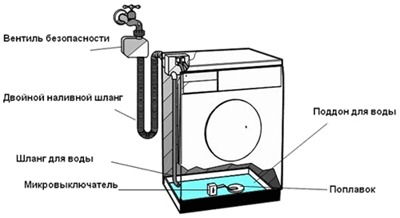 Such protection can be complete or partial. Inexpensive models have a hose protection that shuts off the water supply in the event of a hose break. Full protection means that the model is equipped with both hose protectors and the washing machine body.
Such protection can be complete or partial. Inexpensive models have a hose protection that shuts off the water supply in the event of a hose break. Full protection means that the model is equipped with both hose protectors and the washing machine body.
1. Noise
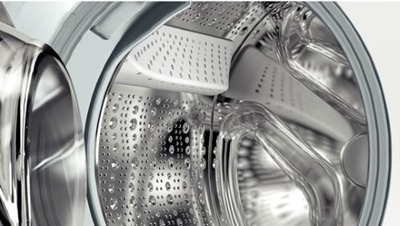 If the car turns out to be excessively noisy, then it will simply be impossible to be in the room. When choosing your model, you need to pay attention to the noise level in the washing mode, as well as spinning. When washing, the noise should not exceed 55 dB, while spinning - 70 dB.
If the car turns out to be excessively noisy, then it will simply be impossible to be in the room. When choosing your model, you need to pay attention to the noise level in the washing mode, as well as spinning. When washing, the noise should not exceed 55 dB, while spinning - 70 dB.

